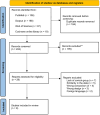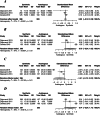Effectiveness of synthetic versus autologous bone grafts in foot and ankle surgery: a systematic review and meta-analysis
- PMID: 38997680
- PMCID: PMC11245794
- DOI: 10.1186/s12891-024-07676-8
Effectiveness of synthetic versus autologous bone grafts in foot and ankle surgery: a systematic review and meta-analysis
Abstract
Background: All orthopaedic procedures, comprising foot and ankle surgeries, seemed to show a positive trend, recently. Bone grafts are commonly employed to fix bone abnormalities resulting from trauma, disease, or other medical conditions. This study specifically focuses on reviewing the safety and efficacy of various bone substitutes used exclusively in foot and ankle surgeries, comparing them to autologous bone grafts.
Methods: The systematic search involved scanning electronic databases including PubMed, Scopus, Cochrane online library, and Web of Science, employing terms like 'Bone substitute,' 'synthetic bone graft,' 'Autograft,' and 'Ankle joint.' Inclusion criteria encompassed RCTs, case-control studies, and prospective/retrospective cohorts exploring different bone substitutes in foot and ankle surgeries. Meta-analysis was performed using R software, integrating odds ratios and 95% confidence intervals (CI). Cochrane's Q test assessed heterogeneity.
Results: This systematic review analyzed 8 articles involving a total of 894 patients. Out of these, 497 patients received synthetic bone grafts, while 397 patients received autologous bone grafts. Arthrodesis surgery was performed in five studies, and three studies used open reduction techniques. Among the synthetic bone grafts, three studies utilized a combination of recombinant human platelet-derived growth factor BB homodimer (rhPDGF-BB) and beta-tricalcium phosphate (β-TCP) collagen, while four studies used hydroxyapatite compounds. One study did not provide details in this regard. The meta-analysis revealed similar findings in the occurrence of complications, as well as in both radiological and clinical evaluations, when contrasting autografts with synthetic bone grafts.
Conclusion: Synthetic bone grafts show promise in achieving comparable outcomes in radiological, clinical, and quality-of-life aspects with fewer complications. However, additional research is necessary to identify the best scenarios for their use and to thoroughly confirm their effectiveness.
Levels of evidence: Level II.
Keywords: Ankle surgery; Arthrodesis; Autograft alternative; Bone graft; Bone substitute; Synthetic bone graft.
© 2024. The Author(s).
Conflict of interest statement
JDC is a Consultant for Link and Resolute Med, Avitus, BoneSupport, Johnson and Johnson, and Orthofix - Not related to this work. JDC Receives Fellowship Support from Biocomposites and BoneSupport – Not related to this work.
Figures




References
Publication types
MeSH terms
Substances
LinkOut - more resources
Full Text Sources
Medical
Research Materials

